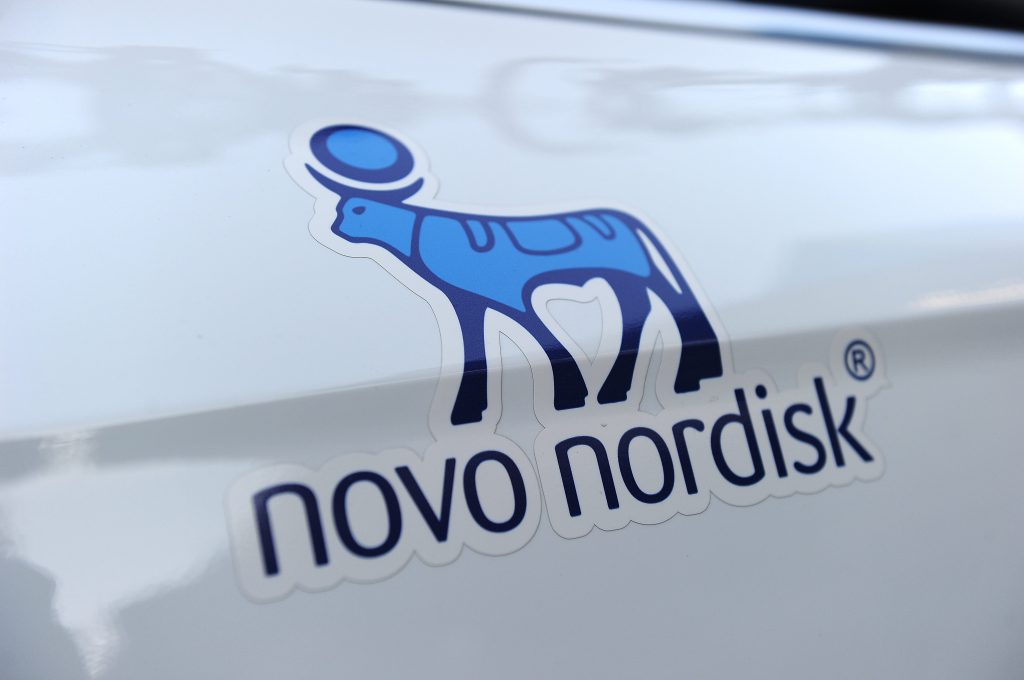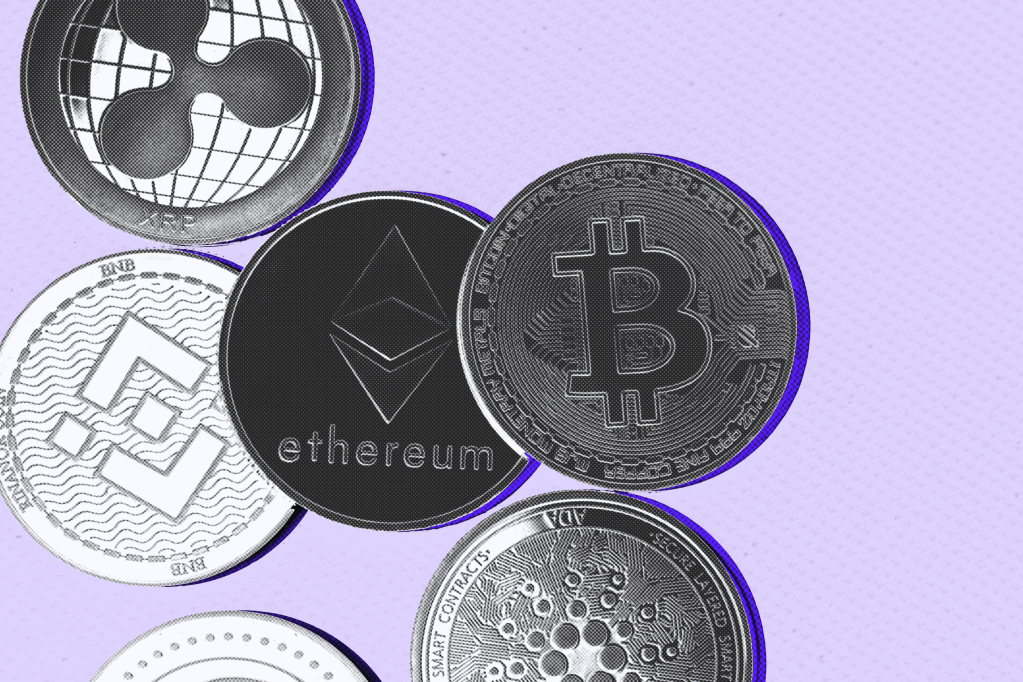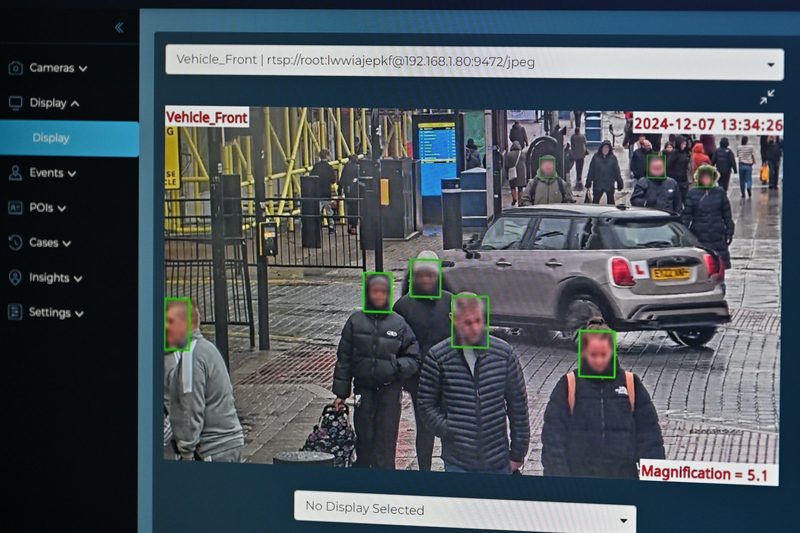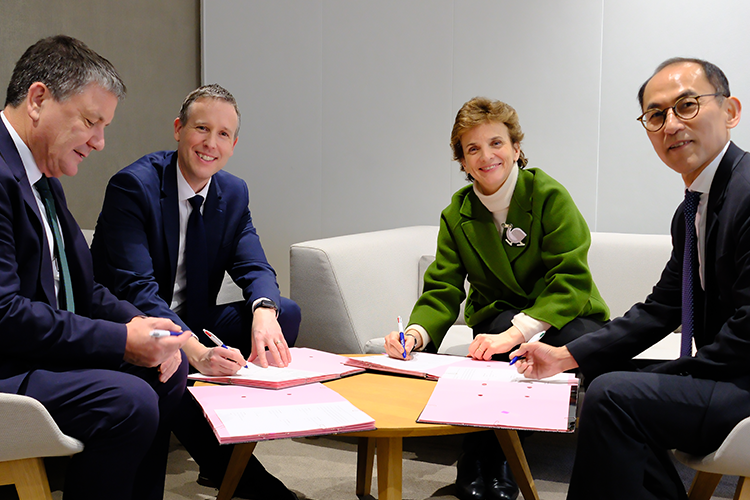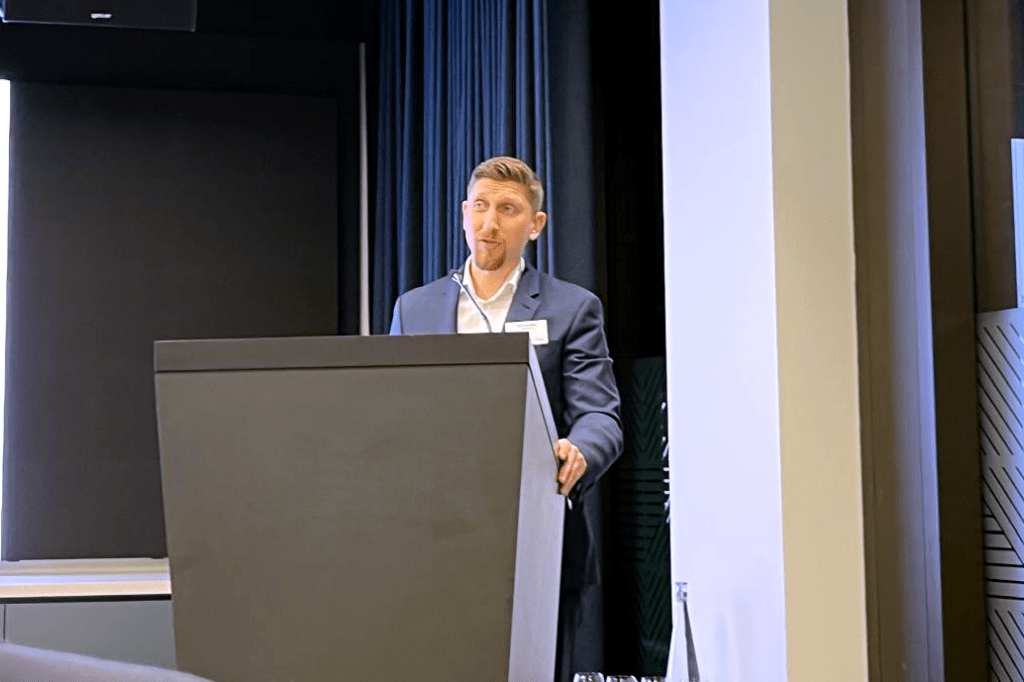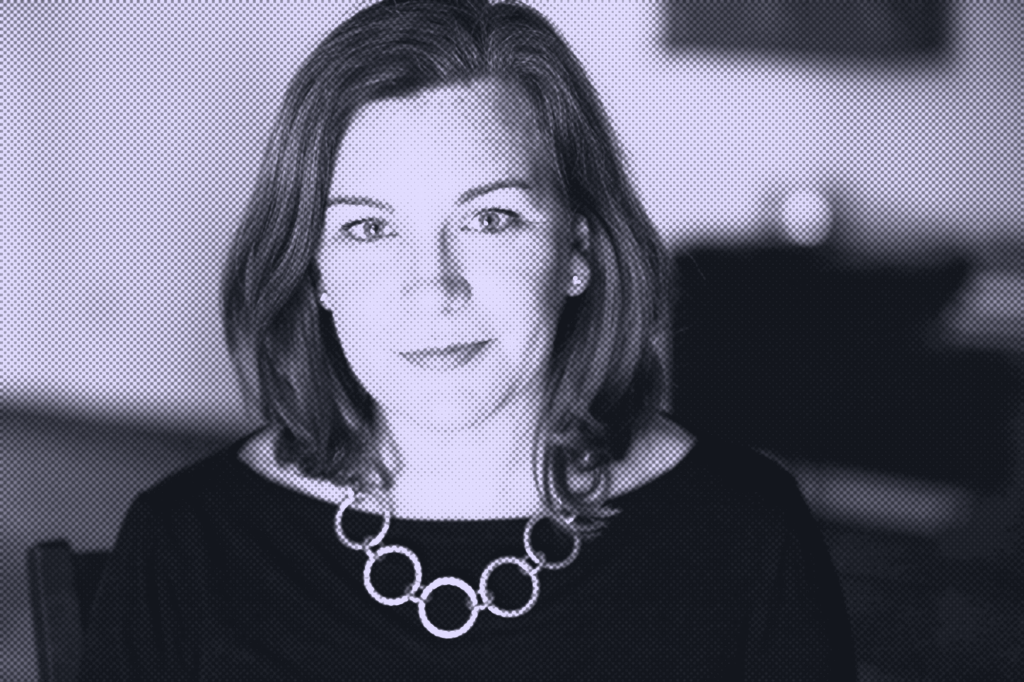This is a transcript of the podcast Katharine Manning on empathy in the workplace between GRIP Senior Report Carmen Cracknell and Katharine Manning, coach, consultant, and president of Blackbird.
[INTRO]
Carmen Cracknell: Welcome to the GRIP Podcast. Today I am delighted to be joined by Katharine Manning, a coach and consultant on empathy, the president of Blackbird, and author of the Empathetic Workplace, five steps to a compassionate, calm, and confident response to trauma on the job. Katharine, I’d love to hear a bit about you in your own words, if you can tell us about your background.
Katharine Manning: Absolutely. I am a lawyer who has spent most of my career working with crime victims, actually. I started off back in college working on hotlines for a domestic violence and rape crisis. Eventually ended up at the U.S. Department of Justice for about 15 years, where I was a senior attorney adviser on victims’ rights. And what that meant is I would do policy and training and consultation on cases for the department, all with respect to how the department worked with crime victims.
And one of the things I began to realize was that people didn’t need different things based on what they were a victim of. So the ways that we would support a victim of identity theft were pretty similar to the ways we would support a victim of terrorism or human trafficking. When people were going through this period of victimization, everybody needed the same things. Everybody needed to feel heard and acknowledged. They needed a voice through the proceedings. Everybody needed referrals to resources.
And then I began to realize that it wasn’t just the victims who needed those things. It was my colleagues, too. You know, colleagues who were dealing with really hard cases sometimes, really challenging issues or dealing with issues in their personal lives. A parent who was very ill or maybe somebody who was dealing with a breakup that was challenging. So I began to realize that we all go through these periods in our life of upheaval and turmoil and distress, and that the ways that we support each other through those times are pretty similar in terms of what people need, and that the ways that we support them are also really important to their individual healing through that time, to our relationship with them, and ultimately to the organization’s success. Because if we can get support when we need it, we’re going to be better at our jobs. So I left DOJ in 2019, and that’s when I wrote my book and have been doing training and consulting on this topic ever since.
Carmen Cracknell: That’s so interesting. I never would have thought that something like identity theft could have the same impact on someone as sort of a more, what you’d think of as, I guess, abusive crime, a direct crime. So how do you approach helping people deal with this form of victimization? Is it more, do you approach it through therapy or training, and what’s the role of compliance in that?
Katharine Manning: Sure. So the point you made about is identity theft really the same as something like trafficking in terms of the way that it harms people? It’s an interesting question because I feel like it’s not, I’m not saying that everybody is equally harmed by the things that they’re going through. I’m saying that the ways that we support them are similar.
In particular, when you’re talking about a workplace where you’re not going to be their therapist, your job as their colleague or their supervisor is not to provide counseling. It’s really, I think of it as kind of emergency services. Like you’re the one on the scene, you provide some immediate support, and then you get them off to the experts that they need. That’s really what we’re aiming for in the workplace. So just as an example, a quick example of how that would work is I had a colleague once who had just been in one of these big government meetings where you have 30 people around a giant table in a big conference room. In that meeting, his boss had belittled him, really, really embarrassed him, made him feel ashamed. He came into my office and he was pacing back and forth in front of my desk. He was talking really fast. He was very angry, very upset.
I realized pretty quickly that the ways that I was speaking to him were the same ways I would have spoken to a domestic violence victim on a hotline call a decade earlier. I realized what he needed was that same sort of active listening. He needed acknowledgement of what he had gone through and through providing that within just a few minutes, he was able to calm down, kind of get his head back on straight and get back to work.
Because I was able to do that for him, it didn’t really disrupt my work day very much. He was able to get back into his work day pretty quickly and he didn’t do something really dumb like a storming into his boss’s office and yell at her.
All of that helps the work day flow better. Just that little bit of active listening skills that I had was what he needed to kind of get everybody back on track and it also meant that we were able to avoid something that could have been potentially really bad for the organization, for him personally.
That’s really how I see that it dovetails with compliance because if we can give people these basic skills in how to support each other through challenging times, we can really end up with healthier, safer workplaces for everybody.
It’s, I would say particularly important for people in compliance because those in compliance are dealing with so many challenging issues. That stress that comes just from you need to go talk to the lawyer. Already people are pretty elevated. If you have the basic skills in active listening, compassionate responses to people in trauma and distress, you’re going to get better information because they’re going to be calmer as they’re dealing with you. They’re going to be more likely to open up, to share with others that it wasn’t that scary talking to the lawyer, it really is okay.
Issues are going to surface more quickly so they can be dealt with before they become bigger.
Carmen Cracknell: That makes sense. I was going to ask you why is empathy at work so important and you’ve answered that really. We’re moving more and more into a remote first world and workplace. How is this, do you think, impacting how empathy is handled?
Katharine Manning: It can make empathy more challenging for sure. I remember talking with one manager and she said back when we were in the office every day I could walk into staff meeting and look around the table and be like, “Oh, something’s wrong with Dan.”
Before anybody said a word, I could just tell by the energy in the room something’s going on with Dan and then I knew to go check in with him later. A lot harder to do that when people are over Zoom, some people don’t have their cameras on. It can be really, really tricky. I think it does require all of us to be a little bit more thoughtful about it, build in more opportunities for check-ins, see if you can have other easy ways for people to build connections. If you have just silly memes or something that you share over Slack, just littler ways of building connections become more important when we are in a more either hybrid or remote environment.
Carmen Cracknell: Do you think this requires organizations and employers to implement a kind of regular training such as weekly empathy check-ins or something like that? Is that something you would advocate?
Katharine Manning: For sure. The research has shown that teams where the supervisor checks in with their direct reports at least once a week have the highest psychological safety. That is just baseline what you should be aiming for. In addition, there are a lot of ways that teams that I have worked with have begun to implement those kinds of check-ins that you are mentioning on a group basis.
Some teams, for instance, will have at the beginning of staff meeting a little roundtable check-in where it is just an easy way for people to talk about how they are doing in terms of mental health. It doesn’t require them to go into a lot of detail. Some will do like are you above the line or below the line? Some will do like scale of one to five with five being I’m kind of pulling my hair out and one I’m great. Some will do red light, yellow light, green light. Just having some sort of easy way to check in on your mental health can be good. I’ve also seen teams where they will do for a smaller organization where they are dealing with a lot of stressful situations. One organization I know will have every Friday they have a standing Zoom where people can just go. It’s not required but if you want to talk about the week and that can be something you are dealing with personally, it could be something out in the world that is really stressful. Just a place where everybody can check in with each other at the end of the week. Or I’ve seen organizations on a larger scale where they have a quarterly call for the entire organization with the CEO and the head of HR that is in particular around what is troubling you right now and how can we do a better job to support you through it. There are lots of different ways to do it. I think for organizations what is essential in this time particularly given everything we have seen in terms of mental health that is affecting our workforces right now, it is essential that leaders really think about what would make sense for their organization and then begin to take those steps. It doesn’t have to be perfect. It can be iterative, something that you work on over time. Just start to implement some of those practices and see what is working and what can really make a difference.
Carmen Cracknell: How have perceptions of mental health and its importance shifted in the last decade, do you think? It’s a term that we often hear now that we didn’t necessarily hear five or ten years ago?
Katharine Manning: I do think people are much more aware of the importance of mental health at work and I think that is wonderful. I think it is great that people are paying more attention to it. I think it is unfortunate that the reality is the reason we are paying more attention to it is because it has gotten to such a difficult place in recent years as we faced COVID and here in the U.S. we are seeing mass shooting after mass shooting. We have seen a lot of racial reckoning. There are a lot of challenges and so we are to the point now where global rates of anxiety and depression have increased by 25% and about 27% of Americans are saying that they are so stressed they cannot function on most days. It has really gotten to the point where I think it is impossible to ignore.
In honesty we have always had mental health challenges that are affecting our workplaces. We have always worked with people who are experiencing mental or physical health challenges who are dealing with addiction and alcoholism, divorce, sick family members and on and on.
These are things that we have always faced in the workplace. It is just now I think they have become to the level that it is impossible to ignore. I do think that the issue facing leaders right now is are we going to pretend now that we were not, we never saw that. Are we going to try to go back to the way things were before we had this awareness or are we going to use this understanding and build new ways of interacting in the workplace that can really make a difference for our workers and ultimately for organizations as a whole.
Carmen Cracknell: Those figures are really shocking. Is that a result of COVID lockdowns or is it something that was progressively happening in the last decade?
Katharine Manning: The first statistic about global rates of anxiety and depression that comes from the World Health Organization is in particular related to COVID lockdowns. The second about 27% of Americans experiencing stress every day is from the American Psychological Association. It is higher than normal but it has been gradually increasing over time.
Carmen Cracknell: My next question is kind of linked to what I just asked but from a different angle I guess. Do you think it’s fair to say that empathy in the workplace has been lacking until quite recently? Maybe until sort of COVID and lockdowns arrived?
Katharine Manning: Sure, and I mean there are a lot of places that it’s still lacking now obviously. I do think that more and more leaders are becoming aware of the need for it and beginning to prioritize it but I don’t think it would be fair to say that there is a universal understanding that this is important. We’re still seeing statistics that say things like HR leaders believe that there is not adequate empathy in their organizations but CEOs think that there is a great level of empathy. There’s a real disconnect there. Even among CEOs, a lot of them are saying while they recognize that empathy is important, the overwhelming majority of them fear that they don’t have the skills to be as empathetic as is needed and also worry that if they express empathy at work they will be seen as weak.
So unfortunately I think that for a lot of leaders there is, while there’s more of an understanding of the importance of it, there isn’t enough of an understanding of how to do it in a way that allows you to continue to do the important work that you need to do, be seen as decisive and successful and all the things you need to be seen as a leader and that that’s not at odds with being an empathetic leader as well.
Carmen Cracknell: What are the most common workplace issues? Is it more things that relate to the job such as low levels of job satisfaction or is it often more personal issues coming into the workplace?
Katharine Manning: What I’m seeing a lot right now is burnout. In particular in some industries like healthcare of course, mental health professionals and MDs, medical doctors and people who work in healthcare across the board are experiencing high levels of burnout right now. But also other industries as well. I’m seeing it in higher ed. I’m seeing it in people who provide emergency services, law enforcement, child and family services, everybody who’s doing direct services with the public seems to be experiencing high levels of burnout right now.
Other issues that I’m seeing are issues around in organizations as they’ve had more cutbacks. For instance, in the tech industry, we’ve seen a lot of layoffs this year and because of that we’re seeing a lot of anxiety even among the people who have remained. So you haven’t been laid off but you fear am I next? And also survivor’s guilt among those people who have stayed. And then there’s just a lot of challenges around the fallout from COVID. I mean the levels of supervisors who are hearing things like suicide, concerns around suicide, a lot of concerns, phobias, real fears around returning to the office. A lot of people have social anxiety. A lot of people have even fear of leaving their house at this point. So a lot of the mental health challenges are really having a direct impact on the workplace in ways that a lot of managers are struggling to know how to deal with. Yeah.
Carmen Cracknell: You’ve worked with, as you said, a lot of crime victims. What kind of key takeaways did you get from that?
Katharine Manning: As I said earlier, I really do think that while it’s maybe not the same level of distress that people are dealing with, I think the ways that stress shows up in us, it’s not different based on what it is that we’re going through. So you’re going through divorce, you’ve been a victim of a, I don’t know, a robbery.
There’s similar ways that we respond to that and it can show up in things like it’s harder to concentrate. So you experience brain fog, suddenly you’re very forgetful.
It can be harder to keep on track with the things that you need to be doing at work, harder to communicate, harder to understand what others are saying. And another thing that I’ve seen again and again with people who are experiencing a period of trauma or distress is that everybody wants more information at the same time that it’s harder to process information. So it can be really difficult. So if you just imagine, for instance, you are a leader and you are saying, “Okay, we’re going to reopen, we’re going to reopen our offices and we’re going to ask everybody to come into the office three days a week.”
There’s going to be a real craving for information like what three days? This is going to apply to everybody. When is this going to start? Everybody’s going to want as much information as you can provide. And then you will provide the information and you’ll think, “Well, I’ve already answered that question.” And your inbox will be full of people saying, “But wait, when is this going to start?
And what about me because I have this special issue? Is this going to apply to me?” And you’ll say, “Well, just read the memo. I’ve already provided you the memo.” People need to hear these things again and again and again. And it can seem almost like you think, “Well, I know that I have said this already. Is nobody listening to me?” It’s because it is really difficult to process information when you’re going through these stressful times.
In my work with victims, my rule of thumb was always they hear about a third of what I’m saying. So I try to say everything, particularly if it’s an important thing. I try to say it three times.
And so as a leader, just think about that. Maybe you say it in an all hands meeting and you follow up with an email and then you mention it at a SOC chat later on and you make sure that all of your managers are also underscoring it in their team meetings. Just make sure you’re saying things again and again and again when you know that people are stressed about something, when something is challenging for them.
Carmen Cracknell: Yeah. It’s amazing how a lot of people have been so stressed about coming back to the workplace after two years of being at home. In your opinion, do you think it’s best for employers and companies to have a completely flexible policy on attendance in the workplace? Just have a hybrid model? Do you think it’s better for people to aim to come in more often so that they can connect easier with employees?
Katharine Manning: You know, I think it really is dependent on the industry and the individual organization, but I will say that the more flexibility you can provide, the better. When you give people flexibility, it gives a sense of safety. So they feel calmer. Okay, I know that I’m going to have a little bit of autonomy in this situation to craft what works for me. And that might mean, for instance, that they’re able to go see their therapist every Tuesday afternoon like they’ve been doing for the last two years that’s really helped them to stay on an even keel. Or it means that they’re able to go for a walk in the middle of the day or take a quick break when they need one that can really help them in terms of their ability to continue to stay focused and do the work that they need to do. I know in some organizations, the way that that plays out is going to vary because there are just needs of the organization. I mean, if you have to have coverage in the office, for instance, you’re at a hospital, your ability to provide flexible work might be limited. But for a leader, my general rules of thumb are provide as much clarity and as much flexibility as you can.
Carmen Cracknell: And besides that, what key skills do you think, especially leaders and CEOs and people who, like you said earlier, don’t seem to think that necessarily is an issue? What kind of skills should they and can they develop to be more empathetic?
Katharine Manning: You know, one of the main things that I wish more leaders had was a curiosity and a desire to understand rather than solve. So often, the ways that we get more senior in our roles is by being really good problem solvers. You’re able to identify the issue and come up with a solution very quickly or reframe it in a way that is helpful. And that is fantastic for a lot of your role. But when somebody comes to you who is experiencing a challenge, they’re upset about something, if you jump to problem solving that can, unfortunately, it can create barriers between you. It can make it less likely that they will get help that they need.
And it can actually make things worse. So just a quick example, I spoke with one supervisor who had a person on his team who he’d worked with for a number of years who came to him and said, I need you to understand that I’m in the midst of a severe depression and in fact, I’m suicidal right now.
And the supervisor, his knee jerk reaction was, it’s my job to help this guy. I have to solve this problem. And so his response was, well, have you tried exercise?
Which when you say that to somebody who is experiencing those kinds of thoughts of self-harm, what you are communicating is, I know better than you. You probably have not thought of this solution that I have. And probably the person has already been through all of that.
You’re making them feel kind of dumb and like you don’t really understand the extent of what they’re trying to share. This person is probably, if they’ve come to the point of expressing to their supervisor that they’re suicidal, I am sure they have been through a number of resources already.
And so instead of bringing you closer, they actually bring you further away when you try to solve that problem. Instead, what I would recommend for that communication is what I call my laser technique. This is what I go over in my book, The Empathetic Workplace. Start with listening. So just active listening. Then acknowledgement. Acknowledgement is just, I hear you. That sounds really hard. I’m sorry for what you’re going through. Just acknowledge what they’ve shared. Then you can share information.
So I know a lot of people are suffering right now. I’ve seen some statistics about levels of anxiety and depression are really on the rise right now. So please know you’re not alone. Just share information. And then empower with resources. So we’ve done listen, acknowledge, share, and empower with resources is, do you know that we have mental health resources here in our company? I’d be happy to share those with you if that would be helpful. And then the final step is R for return. And that is literally going back to the person to check in later. You know, how are you doing? I’ve been thinking about you. And it’s also a return to yourself, recognizing that supporting others takes a toll on us. So do what you can. It’s a really hard conversation when somebody shares that they’re suicidal. So give yourself a little time to process. Go for a walk. You know, listen to music, whatever it is that helps you kind of calm and level set yourself before you go back into the rest of your day.
Carmen Cracknell: Absolutely. And a bit of a different question. This is, I guess, a lot of this about soft skills and taking a personal approach. But data is so useful right now for figuring out new ways to do things. Is there enough data around this topic? And how useful is it to take a database and statistical approach to empathy?
Katharine Manning: I think it is helpful. There are certainly pretty astounding studies out there right now. Gallup State of the Global Workplace, the Business Solver. The Business Solver has a State of Workplace Empathy report that I rely on quite a bit for the research that I do. In my training of organizations, I always start with statistics because I think it opens people’s ears. Helps them understand that this is not something that is just a nice to have, but it is truly essential to the bottom line that we get better at this. So I think statistics are helpful for that. In terms of workplace studies, individual organizational studies, I think that it can be helpful in terms of getting a pulse on what is going on. What I would recommend if you are thinking about a study like that is something along the lines of do you have someone at work that you can confide in? Do you believe that your supervisor cares about your mental health? Those kinds of things, as opposed to are you currently experiencing depression? You don’t want to be asking real personal questions like that, both in terms of individual privacy and frankly from a compliance perspective. If you uncover things like somebody is experiencing thoughts of suicide, they are contemplating harm of someone else, they are experiencing violence in their home. If you have that information but no way of actually acting upon it, it can actually, I think, be problematic from a compliance perspective. I would stay away from those real specific questions about an individual’s situation in terms of the experiences that they are having and focus more on are you getting the support that you need at work. That can give you a snapshot understanding of where you could provide more resources. Are you finding out that most people don’t believe that their supervisor really cares about their mental health? That is important information for leaders to have so that they can begin to address that problem.
Carmen Cracknell: Amazing. Well, that’s been so interesting. I would love to talk more, but that brings me to the end of my questions. Do you think we’ve missed anything? Do you have any sort of things you’d like to add from a compliance perspective?
Katharine Manning: I don’t think so. I’m really grateful that you are thinking about this topic and that all the listeners are beginning to think about this as well. I think anything we can do to build up these empathy skills or active listening is really going to make a huge difference both for our organizations and also frankly for ourselves.
Carmen Cracknell: Absolutely. Awesome. Well, thank you so much for your time, Katharine, and for speaking to me. Thank you very much for your time.

